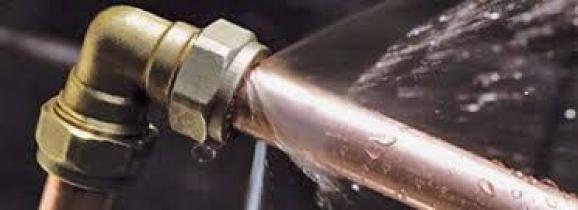The House's Principal Frequent Triggers of Leakage: In-Depth Analysis
The House's Principal Frequent Triggers of Leakage: In-Depth Analysis
Blog Article
Listed here in the next paragraph you can get lots of first-rate additional info in relation to Common Water Leaks In House.

Leaks not only cause waste of water yet can additionally trigger unneeded damage to your home as well as promote unwanted organic development. Regrettably, water leaks may go unnoticed considering that most of the pipework in our house is concealed. By looking and understanding for daily circumstances that trigger leaks, you can shield your house from future leaks as well as unnecessary damage. Today, we will certainly check out 6 leak creates that may be triggering your pipes to drip.
Immediate temperature level modifications.
Extreme temperature level modifications in our pipelines can cause them to increase and acquire all of a sudden. This growth and also contraction may trigger splits in the pipes, particularly if the temperature level are listed below freezing.
Corroded water systems
As time goes by, your plumbing system ages and corrosion such as rust may begin gnawing the pipelines. This might be the cause of discoloration or warping on your water pipes. This calls for an assessment with your plumber immediately. If our plumbing system is old, consider replacing the pipelines given that they go to a higher danger of corrosion than the more recent versions.
Malfunctioning Pipeline Joints
The factor at which your pipes connect is frequently the weakest web link in the waterline. Pipe joints can degrade gradually, leading to water leakages. The bulk of pipe joints are not easily noticeable. If you have noisy pipes that make ticking or banging sounds, particularly when the hot water is activated, your pipe joints are probably under a great deal of pressure. It is advisable to have your plumber evaluate your system once a year.
Intruding origins
The majority of water leakages start outside your home instead of inside it. If you discover a sudden decline in water stress, say in your faucet, take some time to go out and also examine your yard. You could discover damp patches or sinkholes in your backyard, and that could indicate that tree origins are getting into water lines creating water to leak out. You can have your plumber look for intrusion, specifically if you have trees or shrubs near your residential or commercial property.
Poor Water Connectors
At times, a leakage can be created by loose hoses and also pipes that supply your appliances. In case of a water connections leak, you may see water running straight from the supply line or pools around your home appliances.
Blocked Drains
Clogged drains pipes might be aggravating and also inconveniencing, however they can in some cases wind up triggering an overflow resulting in break pipes. Maintain getting rid of any kind of products that might go down your drains pipes that could block them to stay clear of such hassles.
All the above are causes of leakages yet not all water leaks arise from plumbing leaks; some leaks may originate from roofing leakages. All leakages must be repaired promptly to prevent water damages.
Leaks not only create waste of water yet can additionally trigger unnecessary damage to your residence as well as promote undesirable natural growth. By understanding and also looking for day-to-day circumstances that cause leaks, you can secure your house from future leaks and unneeded damage. Today, we will look at 6 leak triggers that may be triggering your pipelines to drip.
At times, a leakage can be caused by loosened hoses and also pipes that provide your home appliances. In instance of a water connections leakage, you may observe water running directly from the supply line or pools around your appliances.
How To Check For Water Leak In Your Home
How To Check for Leaks
The average household's leaks can account for nearly 10,000 gallons of water wasted every year and ten percent of homes have leaks that waste 90 gallons or more per day. Common types of leaks found in the home are worn toilet flappers, dripping faucets, and other leaking valves. These types of leaks are often easy to fix, requiring only a few tools and hardware that can pay for themselves in water savings. Fixing easily corrected household water leaks can save homeowners about 10 percent on their water bills.
To check for leaks in your home, you first need to determine whether you're wasting water and then identify the source of the leak. Here are some tips for finding leaks:
Take a look at your water usage during a colder month, such as January or February. If a family of four exceeds 12,000 gallons per month, there are serious leaks.
Check your water meter before and after a two-hour period when no water is being used. If the meter changes at all, you probably have a leak.
Identify toilet leaks by placing a drop of food coloring in the toilet tank. If any color shows up in the bowl after 10 minutes, you have a leak. (Be sure to flush immediately after the experiment to avoid staining the tank.)
Examine faucet gaskets and pipe fittings for any water on the outside of the pipe to check for surface leaks.
Undetected water leaks can happen without the home or business owner even realizing. If you suspect a water leak, but not able to find the source. It is time to contact a professional water leak detection service, The Leak Doctor.
How To Find a Water Leak In Your Home
https://www.leakdoctor.com/blog/How-To-Check-For-Water-Leak-In-Your-Home_AE197.html

As an enthusiastic reader about How to detect water leaks in your home, I figured sharing that section was a good thing. Sharing is good. One never knows, you will be helping someone out. We cherish reading our article about Most Common Causes of Leaky Pipes.
Get professional leak detection today. Report this page